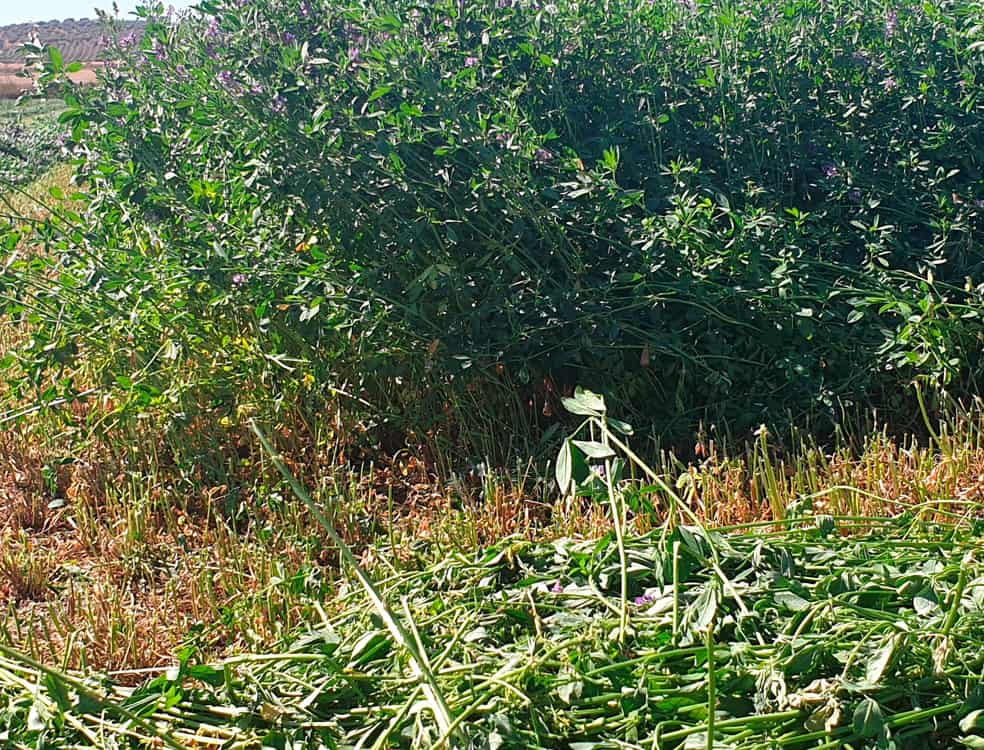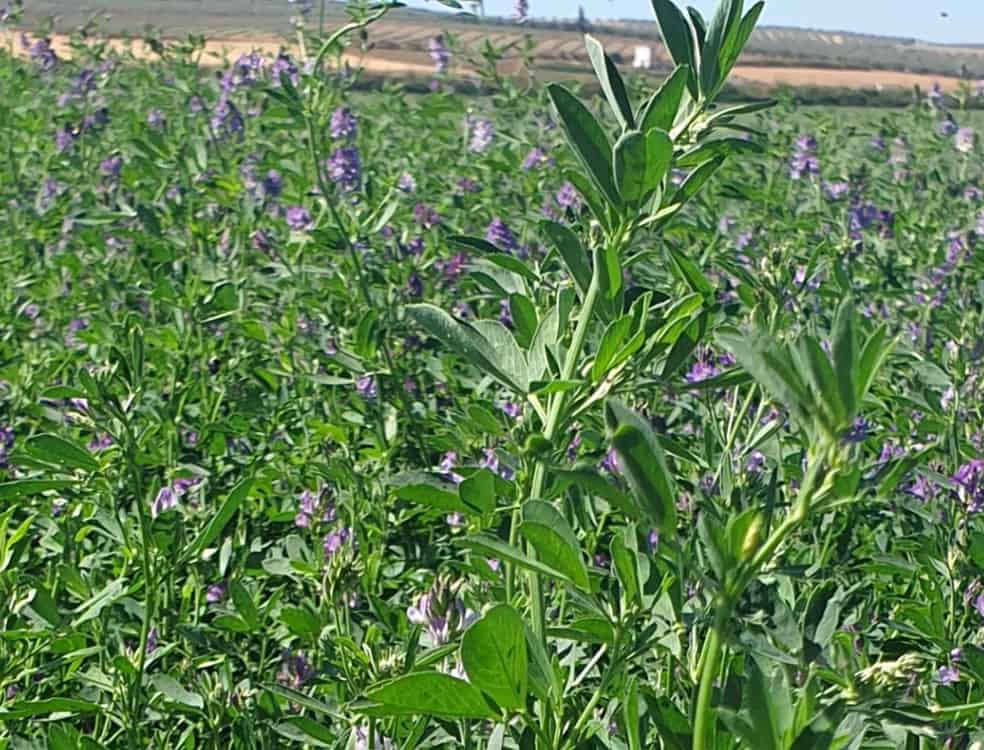Al-Fac
Alfalfa
Al-Fac (Medicago Sativa) is a species of legume in the legume family. Its characteristics make Al-Fac an alfalfa with very favorable differentiations for the producer and obtain a distinction in quality with respect to other alfalfas that are on the market.
Al-Fac maintains the particularities of the alfalfas used by our elders, but with the characteristics and phenotypes of alfalfas that are required today.
The particular conditions we use in the production of Al-Fac seeds and the climatology of the area where we produce it make Al-Fac a very productive alfalfa with an excellent adaptation to various conditions and types of soils. The characteristics of Al-Fac mean that in addition to very high productions we achieve excellent nutritional quality, both in its percentages of protein and in its percentages of fiber.
Characteristics
- High leaf content
- Large sheet size
- Thin, compact stem (not hollow)
- Increased leaf persistence due to peduncle strength
- High regrowth capacity
- High persistence.







Sheet
Scientific name of the species
Medicago sativa
Common name of the species
Alfalfa Al-fac
Vegetative cycle
Perennial, 4 -5 years (depending on handling)
Growth
Erect
Height
0.7 - 1 mt
Growing station
Warm season
Dissemination
Seeds
Soils
Deep, well drained. Sandy franc, loamy and loamy franks
Drought tolerance
Loud
Frost tolerance
Loud
Salinity tolerance
Stocking
Tolerance to waterlogging
Does not tolerate
Total dry matter production/ ha
4,000 - 5,000 kg of dry matter / ha and cutting
Palatability
Excellent
Toxicity
Does not possess
Planting season
Since the beginning of warm weather and autumn
Planting density
40 kg / ha
Planting depth
1 cm
Remarks
Forage production
Implementation for Al-fac
Preparation of the land
The preparation of the soil must be carried out in order to promote a good establishment of the crops, being used appropriate equipment in the correct period, considering that the preparation of the soil is one of the most important aspects for the birth. You must get a loose soil which will allow us to have the right planting depth
Sowing and establishment
Data to take into account is the planting surface, the correct surface is 1 cm. deep in the ground.
- The use of compactor curl in sandy soils improves the quality of planting based on the uniform acceleration of seed germination (not recommended for clay soils).
- It can be sown in direct sowing obtaining excellent results.
The establishment must occur when the luminosity and temperature are adequate for germination. It usually coincides with minimum temperatures above 10 degrees Celsius.
Irrigation
Water is necessary for germination to occur.
When seeds are hydrated with soil moisture, they absorb water. It is the initial process of germination
Sprinkler irrigation
- Germination irrigation, of the amount necessary to make the moisture in the soil homogeneous, taking into account the climatic factors (wind, the type and texture of the soil, orography of the terrain). Fournir suffisamment d’eau pour rassembler l’humidité dans le sol, en utilisant un volume d’eau élevé pour éviter les problèmes de “cuisson” de la graine dus aux températures élevées à la date de plantation, en évitant toujours l’engorgement.
- Subsequent irrigations: taking into account the climatic factors (wind, the type and texture of the soil, orography of the terrain) must be carried out at the request of the plant, the symptoms of irrigation needs are flaccidity and decay of the leaves.
- The water needs of the plant are increasing according to the growth of the plant, having to provide more water as the plant grows.
- In a first stage (still small plant) the plant does not tolerate an excess of water correctly.
Irrigation on foot or flooding
- First irrigation germination, with this type of irrigation takes even more importance the use of the roller compactor to avoid the possible dragging of the seed (provided that the texture of the soil allows us).
- Second half-cycle irrigation: it should be provided when the crop is in the middle of the cycle. However, as we indicated in sprinkler we must analyze the water need of the plant, being able to advance or delay irrigation at the request of the crop.
Forage management
Forage
The flowering percentage of the plant will be directly linked to the percentage of hay protein. With a percentage of flowering low your protein percentages will be high. The hay must be made with the necessary moisture to maintain the highest quality, the quality is subject to the protection and safeguarding of the leaf.
Fertilization
Advisable fertilizers: the levels of phosphorus, nitrogen and potash must be maintained in their optimal state since they are macro elements that are linked to the growth of plant species. Fertilizers not very rich in nitrogen and high in phosphorus in addition to microelements are advised.
Diseases
Alfac, like all alfalfas, can be sensitive to the plague of insects such as gardama, donut or polyphagous insects, if these were present in the crop we must treat with an insecticide containing pyrethrin, a systematic insecticide that can usually be found in stores.
Videos

Contact us
- Responsible: Efecto Soluciones S.L.
- Purpose of the collection and processing of personal data: to manage the request you make in this contact form.
- Rights: You can exercise your rights of access, rectification, limitation and deletion of the data in info@efectosoluciones.com, as well as the right to file a claim with a control authority.
- Additional information: In the privacy policy you will find additional information about the collection and use of your personal information. Including information on access, preservation, rectification, deletion, security and other topics.
